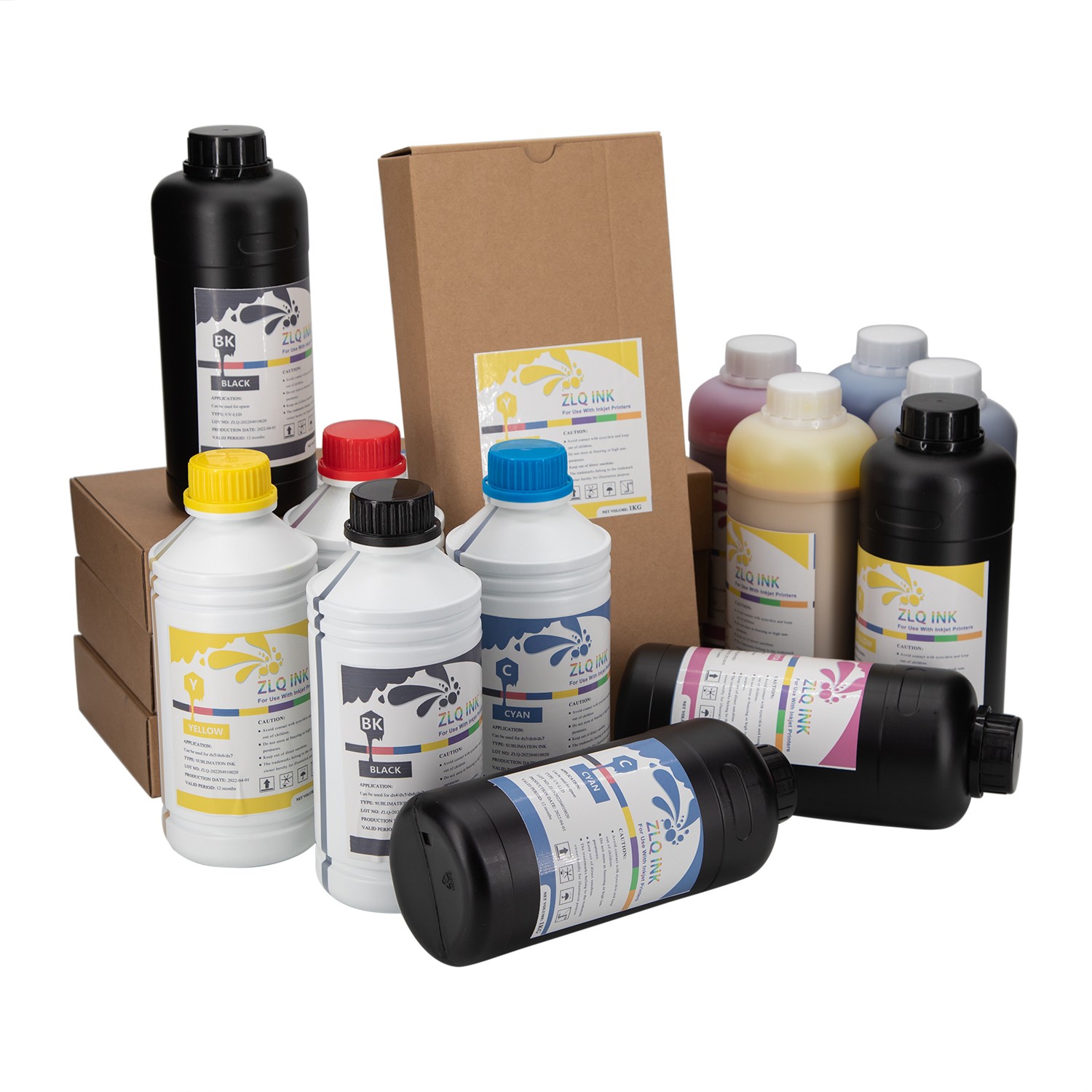
Sublimation ink is a special type of ink mainly used in the sublimation printing process.
I. Ink Composition and Characteristics
Composition
Sublimation ink is mainly composed of dyes, binders, additives, and other components. Among them, the dye is a crucial part, determining the color and color vividness of the ink. These dyes are usually sublimation dyes, which have the characteristic of being able to directly change from a solid state to a gaseous state at high temperatures. The binder serves to evenly disperse the dye and make it adhere to the printing medium. It is generally an organic substance with good fluidity and adhesion. Additives are used to improve the printability of the ink, such as adjusting the drying speed of the ink and improving the stability of the ink.
Characteristics
Sublimation property: This is the most prominent characteristic of sublimation ink. Under specific temperature and pressure conditions, the dye in the ink will sublimate, that is, directly change from a solid state to a gaseous state. The gaseous dye can penetrate into the interior of the printing material, such as polyester fiber, forming a dyeing - like effect. Compared with traditional inks, sublimation ink does not simply form an ink film on the surface of the material, but makes the color penetrate deep into the material, so the color fastness and durability are better.
High color vividness: Because the dye in the sublimation ink can sublimate well and be evenly distributed in the printing material, it can present very vivid and realistic colors. This ink can well restore the color details in images and designs. For example, it performs excellently in printing high - quality photos and patterns with rich colors on sportswear, and its color - expressing ability is usually better than that of traditional pigment - based inks.
II. Printing Principle
Heat - transfer process
Sublimation printing is generally carried out through heat - transfer. First, a designed pattern is printed on a special transfer paper with sublimation ink, forming a transfer image. During this process, after the ink dries on the transfer paper, it forms a coating containing sublimation dyes. Then, the transfer paper is closely attached to the target printing material (such as fabric, ceramics, etc.), and high temperature and a certain pressure are applied through heating equipment (such as a heat - transfer machine). During this process, the dye in the ink on the transfer paper sublimates, and the gaseous dye molecules diffuse into the interior of the printing material under the action of pressure. When the temperature drops, the gaseous dye re - condenses on the fibers or surface of the printing material, thus completing the pattern transfer.
Temperature and pressure control
Temperature and pressure are the key factors in sublimation printing. Different printing materials and ink formulations may require different temperature and pressure settings. Generally, the temperature range is between 180 - 230 degrees Celsius, and the pressure is around 0.3 - 0.5MPa. If the temperature is too low, the dye will not sublimate completely, resulting in light - colored and incomplete transfer patterns; if the temperature is too high, the printing material may be damaged or the color may spread excessively, affecting the clarity of the pattern. Similarly, an appropriate pressure can ensure that the transfer paper and the printing material are closely attached, allowing the dye to be smoothly transferred from the transfer paper to the printing material. Insufficient pressure may lead to uneven transfer, resulting in blurry patterns or mottled colors.
III. Application Fields
Textile printing and dyeing field
It is widely used in the textile industry such as clothing and home textiles. For products such as sportswear and personalized T - shirts, sublimation ink can print designs with rich colors and exquisite patterns. Because the ink can penetrate into the interior of the fabric fibers, the printed clothing is comfortable to wear, and the pattern has a soft hand - feel, without the obvious gluey texture like traditional printing. Moreover, after multiple washes, the color of the pattern can still maintain good vividness and integrity, making sublimation printing and dyeing an important method for high - quality textile printing and dyeing.


Home decoration field
It is used for the decoration of ceramics, glass, and other materials. On products such as ceramic cups and tiles, sublimation printing can produce patterns with high - definition and rich colors. For example, on customized ceramic cups, photos or exquisite patterns can be vividly transferred through sublimation ink, and these patterns have good wear - resistance and water - resistance and can maintain their beauty for a long time. On glass products, sublimation ink can be used to make decorative patterns or logos, adding personalized elements to home decoration.
Advertising and signage field
Sublimation ink can be used to make various advertising materials, such as flags and banners. These advertising materials usually need to be displayed in outdoor environments. The patterns printed with sublimation ink have good weather - resistance, can withstand natural factors such as sunlight and rain, and maintain vivid colors for a long time. Moreover, sublimation ink can achieve high - resolution pattern printing, making it an ideal printing method for some advertising signs that need to display fine images or texts.


